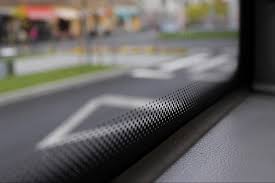The next time you glance at your car’s windshield, take a moment to notice the tiny black dots along the edges.
Often overlooked as a mere design detail, these dots are actually a clever piece of automotive engineering, quietly boosting both safety and durability.
Known as the frit band, the black border around your windshield is made of rough-textured enamel that helps the glass bond securely to the vehicle. This ensures the adhesive holds firm, keeping your windshield properly in place even under stress.
But the frit band does more than anchor the glass. It also protects the adhesive from harmful ultraviolet rays, which can weaken the bond over time if left exposed. By shielding the adhesive from sunlight, it helps maintain the windshield’s long-term stability.

Inside the frit band, you’ll often see a dot matrix — tiny dots that gradually decrease in size. During manufacturing, this pattern spreads heat evenly across the glass, preventing optical distortions known as “lensing,” which can make straight lines appear curved.
Beyond functionality, the dot gradient creates a smooth visual transition from the opaque black border to the clear glass, enhancing the car’s aesthetics.
These small dots also contribute to the windshield’s overall strength, helping it resist damage from temperature changes and minor impacts. What looks like a simple design choice is actually a multi-purpose feature that protects, strengthens, and beautifies your car.
Conclusion:
Those tiny black dots along your windshield are more than just decoration. They secure the glass, protect the adhesive from sun damage, prevent optical distortions, and enhance durability — a small but essential detail that plays a big role in your vehicle’s safety and performance.
